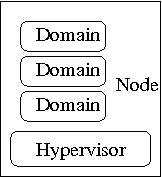libvirt库通过以下三个环境变量配置log:
The library configuration of logging is through 3 environment variables allowing to control the logging behaviour:
LIBVIRT_DEBUG: it can take the four following values:
1 or “debug”: asking the library to log every message emitted, though the filters can be used to avoid filling up the output
2 or “info”: log all non-debugging information
3 or “warn”: log warnings and errors, that’s the default value
4 or “error”: log only error messages
LIBVIRTLOGFILTERS: defines logging filters
LIBVIRTLOGOUTPUTS: defines logging outputs
Note that, for example, setting LIBVIRT_DEBUG= is the same as unset. If you specify an invalid value, it will be ignored with a warning. If you have an error in a filter or output string, some of the settings may be applied up to the point at which libvirt encountered the error.
libvirtd daemon程序也有三个类似的配置项(存储在配置文件libvirtd.conf):
log_level: accepts the following values:
4: only errors
3: warnings and errors
2: information, warnings and errors
1: debug and everything
log_filters: defines logging filters
log_outputs: defines logging outputs
对于libvirtd程序来讲,log配置项的优先级如下:
When starting the libvirt daemon, any logging environment variable settings will override settings in the config file. Command line options take precedence over all. If no outputs are defined for libvirtd, it will try to use
0.10.0 or later: systemd journal, if /run/systemd/journal/socket exists 0.9.0 or later: file /var/log/libvirt/libvirtd.log if running as a daemon before 0.9.0: syslog if running as a daemon all versions: to stderr stream if running in the foreground

